An in-depth look at the amazing history of Galileo at Book 1
Martin Stevens with a Good Morning Bloodstock two-parter as Galileo's story at Tattersalls' premier sale winds down
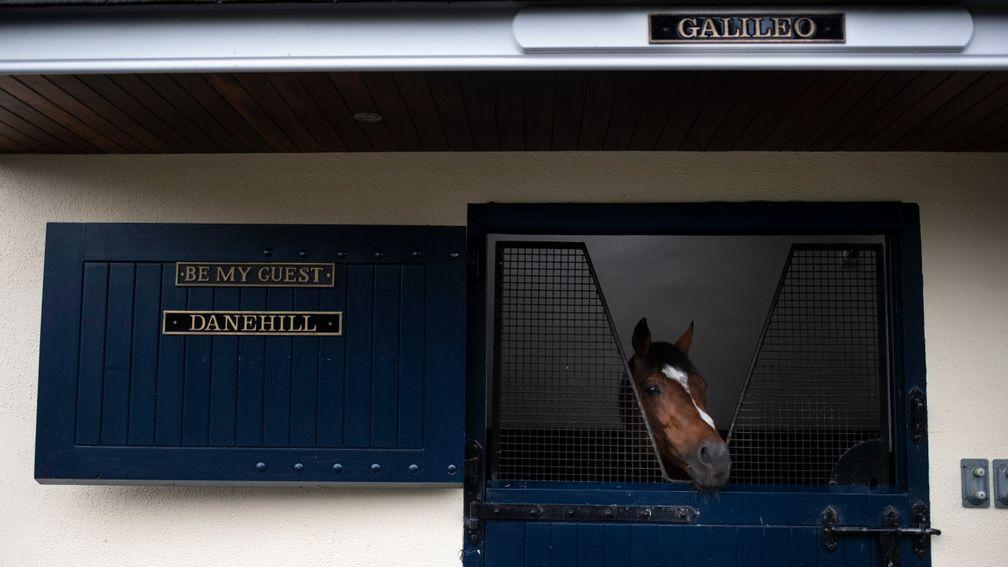
Good Morning Bloodstock is Martin Stevens' daily morning email and presented here online as a sample.
Here he presents the first half of a two-parter dedicated to the late great Galileo focusing on his history at Book 1, which is drawing to a close – subscribers can get more great insight from Martin every Monday to Friday.
All you need do is click on the link above, sign up and then read at your leisure each weekday morning from 7am.
Book 1 of the Tattersalls October Yearling Sale and Galileo go together like stud managers and Schoffel gilets. One is the most prestigious auction of its type in Europe, the source of numerous seven-figure lots and superstars, and the other was by far and away the best sire of those sorts of horses in recent years.
In fact, Galileo’s first yearlings came onto the market in 2004, the year that Tattersalls restructured the old Houghton into the October format, so the stallion and the sale in its current guise have led parallel lives.
Galileo provided some of the most memorable moments at Book 1 in the past two decades, not to mention many of its most distinguished graduates, but the late Coolmore phenomenon’s 20th draft at the auction – such as it is, containing just the one filly – is his last, and so a glorious chapter in the history of the bloodstock industry is coming to a close this week.
In a special Good Morning Bloodstock two-parter I’m looking back at the highs and lows, but mostly the even higher highs, of Galileo at Book 1.
On Monday I’ll look at the sire's debut and steady rise through the ranks, and on Tuesday I’ll come to the years when new Middle Eastern owners entered the industry and pushed prices to extraordinary new highs in order to secure his stock, through to his swansong this year.
2004: a solid start
Oh dear. Galileo’s inauguration as the ultimate Book 1 sire could have begun in more auspicious circumstances.
His very first lot at the auction, a half-sister to dual Group 3 winner Ziria offered by Catridge Farm Stud, sold to Geoffrey Howson for a mere 30,000gns and was given the unbecoming name of Air Biscuit before taking ten starts to get off the mark, and only eventually doing so in a Class 6 handicap to rub it in.
Better was to come, though. Galileo’s second ever Book 1 representative was Global Genius, who might have been a 55,000gns vendor buyback but became his sire’s first black-type horse when second in the Chesham Stakes at the relocated royal meeting at York.
Later through the ring that week were Group 1 winners Allegretto (sold by Airlie Stud to Cheveley Park Stud for 415,000gns) and Sixties Icon (sold by Watership Down Stud to John Warren for 230,000gns), as well as The Last Drop (sold by Newtown Stud to BBA Ireland and Barry Hills for 80,000gns), who ran second to Sixties Icon in the St Leger.
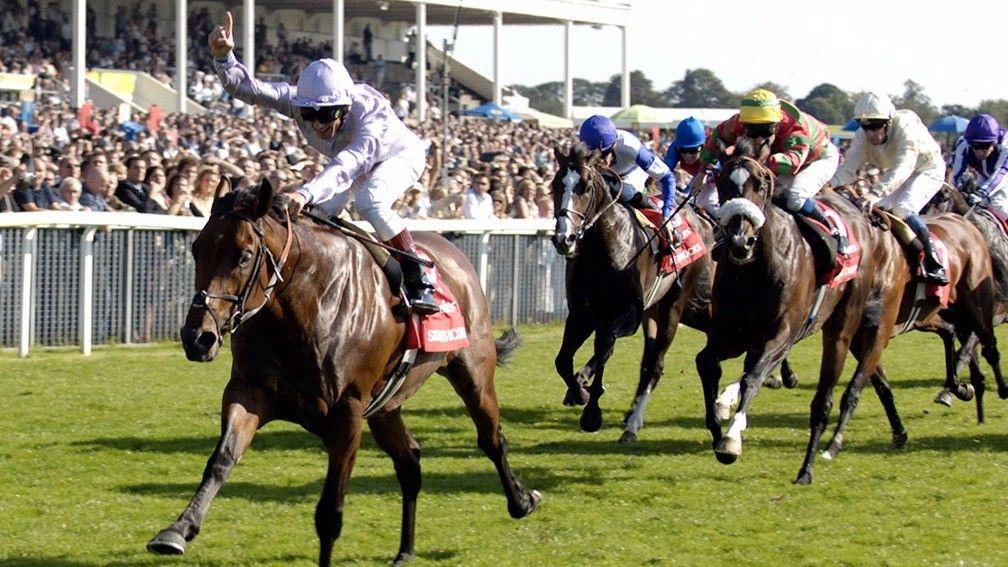
The top price for a first-crop Galileo yearling was 700,000gns, given by Charlie Gordon-Watson for Hascombe and Valiant Studs’ colt out of the operation's Coronation Stakes heroine Balisada. Named Galactic Star, he won the Godolphin Stakes and finished second to Sixties Icon in the Glorious Stakes.
In all, 22 of the 32 lots by Galileo at Book 1 in 2004 changed hands – only 69 per cent; did sellers grasp the sire’s promise before buyers? – but for a bumper average of 182,000gns (well above that year’s overall figure of 102,882gns) and median of 135,000gns (nearly double the 70,000gns for all sires).
2005: bit of a blip
Galileo’s second crop of yearlings went under the hammer at Book 1 towards the end of his notoriously misleading quiet first season with two-year-old runners.
The average and median prices for his 14 lots sold duly fell to 176,286gns and 95,000gns, although the clearance rate actually improved, as only two failed to find new homes.
The top-seller largely responsible for that disproportionately high average, an 800,000gns half-brother to classy sprinters Nipping, Zelding and Zipping named Captain Kidd, presumably had a complicated history as he was knocked down to Japanese agent Nobutaka Tada but entered training with Aidan O’Brien for his wife Annemarie and never raced.
Funnily enough, for whatever reason, it was a pretty poor bunch of Galileos that sold at Book 1 that year. The only Pattern winner among their number was Queen’s Vase scorer Mahler (sold by Kirtlington Stud to Demi O’Byrne for 140,000gns). The most accomplished horse in the cohort turned out to be Triumph Hurdle victor Celestial Halo (sold by Glenvale Stud to BBA Ireland for 40,000gns).
2006: enter Jim Bolger
By this point, Galileo had delivered two Classic winners in Nightime and Sixties Icon, the latter leading home a one-two-three for the sire, as well as a Group 1-winning two-year-old in Teofilo.
It was rapidly becoming evident that he was on his way to becoming a pretty decent sire, then, but the market was perhaps a little slow to react. His results were consistently good but with no giddy highs.
Consequently some 17 of his third-crop lots sold at Book 1 (at a clearance rate of 77 per cent) for an average of 179,529gns (only around two per cent higher than the year before) and median of 180,000gns (not far off double).
The top price of 340,000gns, given by Charlie Egerton, was for the Jamie Railton-consigned Solar Max, who failed to win when he got to the racecourse. Next best was 300,000gns, paid by John Magnier for the Chippenham Lodge Stud-offered Bashkirov, a bitter disappointment who became a pacemaker to better Ballydoyle horses.
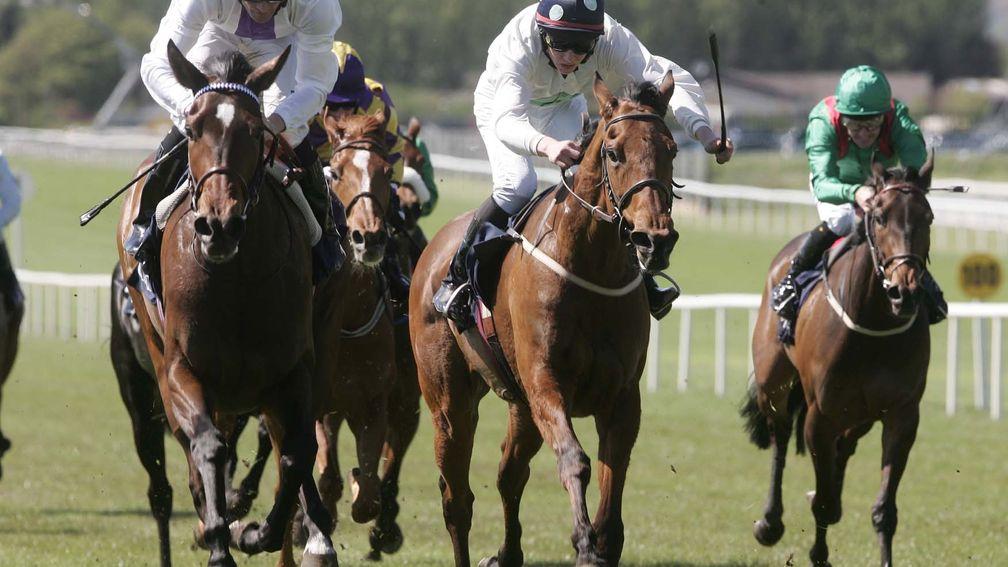
This draft will be best remembered for being raided by Jim Bolger, who was convinced by the greatness of Galileo before most. His purchases included Athasi Stakes winner Prima Luce at 270,000gns and Dundalk maiden third Beyond Compare at 155,000gns. She would produce the trainer’s top-class filly Turret Rocks.
2007: gaining recognition
If yearling buyers hadn't been won over by Galileo’s charms before his fourth crop came onto the market, they had by now. Since the preceding year’s Book 1, Teofilo had remained unbeaten in the Dewhurst to be crowned European champion two-year-old and New Approach was on track to do the same, while Red Rocks had landed the Breeders’ Cup Turf, Soldier Of Fortune had bolted up by nine lengths in the Irish Derby and Lush Lashes had scored on debut in the Goffs Fillies Million.
Twenty-two of the sire’s 28 lots on offer in 2007 sold at a clearance rate of 79 per cent, for an increased average of 223,636gns (up by 25 per cent on 12 months earlier) and median of 205,000gns (up 14 per cent).
Galileo’s most expensive lot was Aristocrat, a half-brother to that season’s Michael Seely Memorial Fillies Stakes winner Silver Pivotal, who was bought by Demi O’Byrne from Stratford Place Stud for 750,000gns. He was Listed-placed at two but his sole victory came in a Wexford maiden at three.
It transpired that it was John Warren who had netted the best Galileo at Book 1 that year, the Irish St Leger hero Sans Frontieres, who cost 450,000gns from the draft of his breeder Lavington Stud.
Also available were Group winners Kite Wood (sold by Northmore Stud to Michael Goodbody for 270,000gns), South Easter (sold by Genesis Green Stud to Anthony Stroud for 210,000gns) and Galileo’s Choice (sold by Camas Park Stud to Bobby O’Ryan for 155,000gns).
2008: one step back
Galileo was well on his way to his first British and Irish sire championship by the time Book 1 rolled around in 2008, thanks to the Group 1 exploits of Lush Lashes, New Approach and Soldier Of Fortune.
The mid-noughties bloodstock boom was also reaching its climax, with Lehman Brothers having collapsed in the US only a fortnight before the sale and the British government bailing out banks a week after, and that year’s sale recorded a personal new best median price of 85,000gns.
So it is strange to look back now and see that Galileo’s stats dropped quite considerably. His average price fell by 18 per cent year-on-year to 184,276gns and his median dropped by 22 per cent to 150,000gns.
The sire’s issue that year was, of course, that those yearlings were bred after his first crop of two-year-olds hit the track and underwhelmed, and he was struggling for popularity. Consequently, they weren’t all bred in the deepest shade of blue.
The best seller was Kirtlington Stud’s full-sister to Mahler bought by McKeever Bloodstock for 480,000gns. Named Quiritis, she didn’t race but made a name for herself as the dam of ill-fated hurdler Sir Erec.
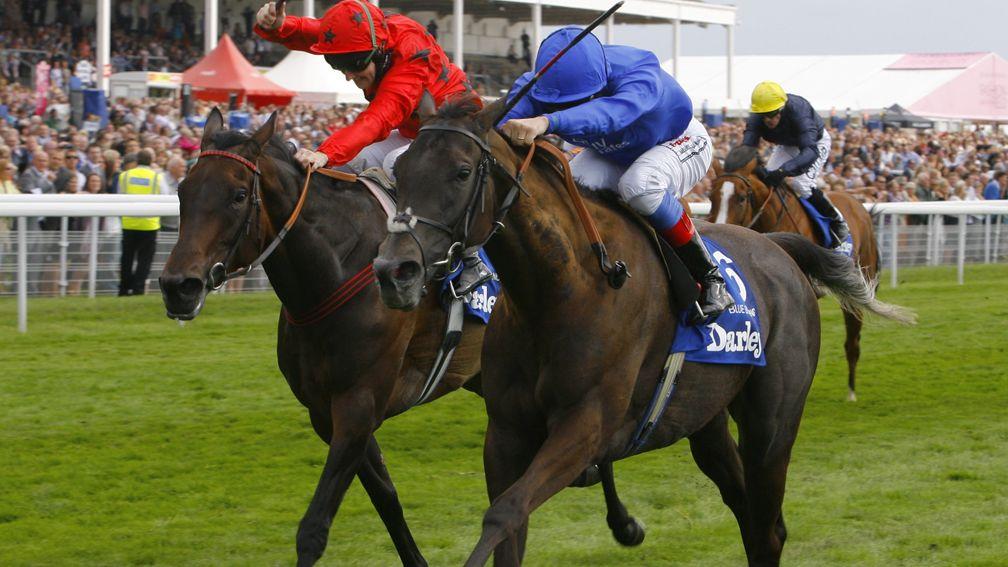
The best runner, on the other hand, was the much less expensive Vita Nova, who was bought by Blandford Bloodstock for 150,000gns and sent out by Sir Henry Cecil to win the Daisy Warwick Stakes and to finish second in the Yorkshire Oaks.
2009: unfortunate timing
With his first yearlings bred at a six-figure sum coming onto the market, and yet more success on the track even if his progeny were overshadowed by his half-brother Sea The Stars this season, this ought to have been Galileo’s big breakthrough at Book 1, when his lots sold like hot cakes.
But by then the credit crunch was biting hard, even in this rarefied level of the market, and the average and median prices dropped by between seven and eight per cent. The highest price, given for the Oasis Dream colt Rudolf Valentino, was the very un-Book 1 top lot sum of 700,000gns.
Galileo’s financial crisis-flattened top lots were the useful handicapper Olympiad, a full-brother to Nightime bought by Sir Robert Ogden from The Castlebridge Consignment for 650,000gns, and the woeful Amen, a son of Irish 1,000 Guineas and Irish Oaks runner-up Kitza bought by Demi O’Byrne from Rockfield Farm for 600,000gns.
Galileo did at least have 27 lots sell from 32 offered (a solid 84 per cent) for an average of 249,259gns (up 35 per cent on 2008) and median of 200,000gns (up a third).
It might be the case that buyers at this stage still hadn’t quite got to grips with what a good Galileo looked or felt like, in person or on paper.
Most of the sire’s first expensively bred yearlings who fetched the biggest prices this year turned out to be disappointing – Sam Lord’s Castle at 550,000gns, Pursuitoexcellence at 550,000gns and Durante Alighieri at 475,000gns won one race between them – while the more affordable Together at 280,000gns won a Grade 1 at Keeneland and Field Of Miracles at 155,000gns was a short-head second in the Ribblesdale Stakes.
2010: onwards and upwards
Galileo’s seventh crop of yearlings were conceived when the sire’s fee first ascended into the realms of ‘if you have to ask the price, you can’t afford it’ and his book became chock-full of Group 1 winners, producers and siblings.
They took their turn in the ring at Book 1 midway through Galileo’s second British and Irish sire championship season, with Cape Blanco and Rip Van Winkle winning elite races and a certain young horse called Frankel emerging as the season’s exceptional two-year-old talent.
Galileo's lots were therefore insulated, to a degree, from the chilling effects of the financial crisis on the bloodstock market. The overall average and median at that year’s sale fell by eight and ten per cent, but his own figures increased significantly.
He had 28 out of 34 lots change hands (82 per cent) at an average price of 292,500gns (17 per cent higher than in 2009) and a median of 205,000gns (2.5 per cent more).
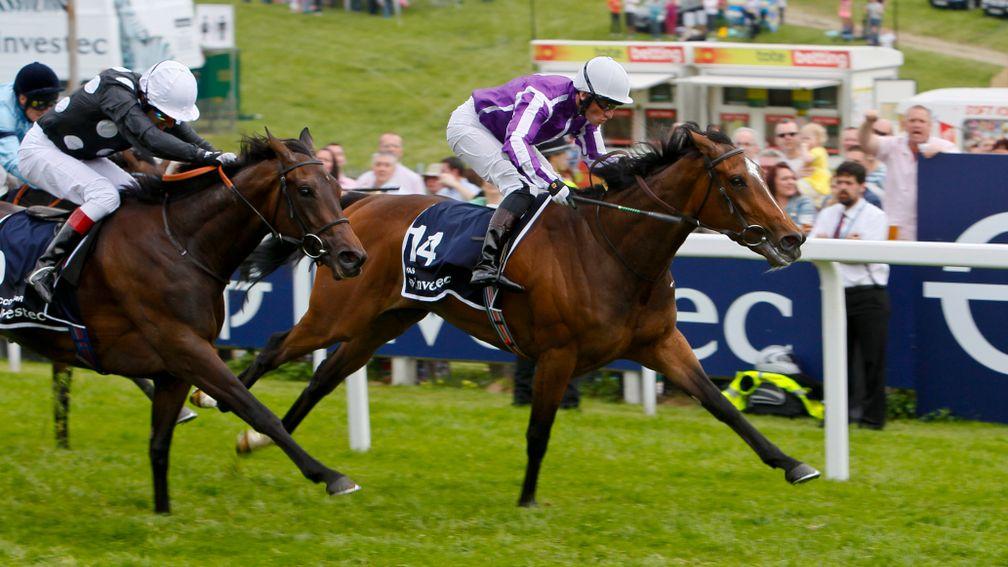
He was also represented by his first seven-figure lot at Book 1, as Lodge Park Stud’s daughter of Alluring Park, a Green Desert half-sister to New Approach, sold to Coolmore for 1,200,000gns. The filly, named Was, went on to win the Oaks.
Galileo’s draft at Book 1 in 2010 was a real vintage crop. Besides Was, it contained Grand Prix de Paris hero Imperial Monarch, St Leger third Michelangelo, and black-type winners Cameron Highland, Dalkova, Kissed, Soon, Starstruck and Ursa Major.
2011: into orbit
This was the year that Galileo’s reputation went stratospheric, as not only was he the sire of Frankel, who made it clear he would be the best horse most of us would see in our lifetimes, but also other Classic winners Golden Lilac, Misty For Me, Roderic O’Connor and Treasure Beach, as well as further top-flight winners Cape Blanco, Galikova and Nathaniel and unbeaten Group 1-winning two-year-old filly Maybe.
The sire really was looking out of this world.
Galileo’s Book 1 average predictably soared by 49 per cent to 435,895gns and his median rocketed by 66 per cent to 340,000gns. He was responsible for the top four lots, led by Nazym, a three-parts sister to Group 1 winners Listen and Sequoyah bought by Charlie Gordon-Watson from Oaks Farm Stables for 1,700,000gns.
His clearance rate faltered, though, with only 19 out of 27 (70 per cent) recorded as sold. It’s not hard to see what happened: no fewer than six whose hammer price was 250,000gns or less went home with their vendors, who clearly weren’t going to risk letting go of a horse of the calibre of Frankel without receiving adequate reward.
Those consignors were right to be cautious, as the best horse by Galileo in that draft turned out to be one of the buybacks. Secret Gesture, a filly out of a Danehill half-sister to Sagamix, made only 230,000gns in the ring but proved to be a star for her breeder Newsells Park Stud, later co-owner with Qatar Racing, by winning the Middleton Stakes and finishing second in the Oaks.
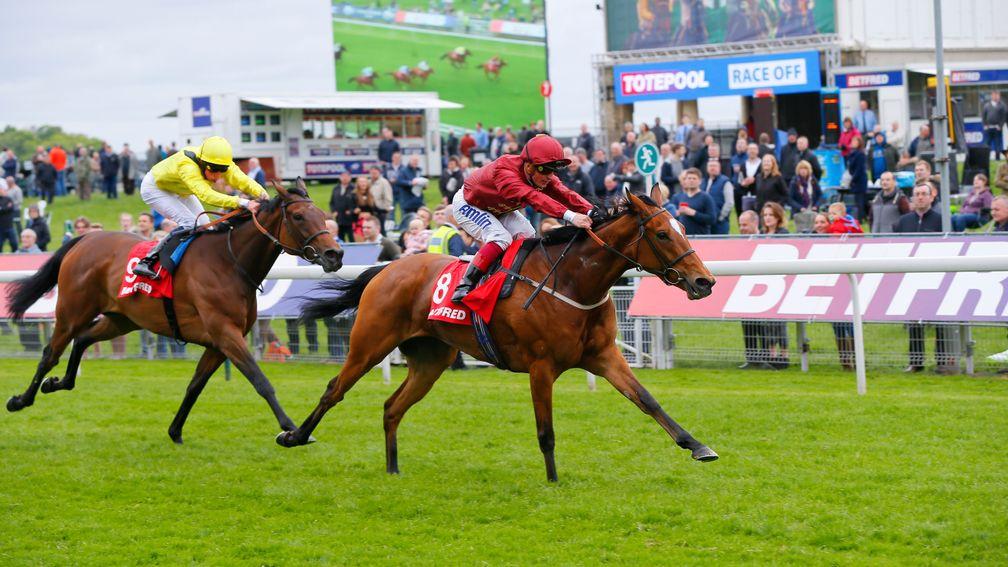
Looking back from an era in which multiple Book 1 millionaire yearlings are commonplace, it seems a little odd that in the year of Frankel’s three-year-old heroics only one Galileo yearling made a seven-figure sum, but it has to be remembered that the wider economic outlook was still terribly gloomy.
Governments were enforcing austerity measures on their people and unemployment levels across Europe were at record highs. The old joke ‘what’s a Grecian urn?’ wasn’t so funny after Greece was plunged into chaos by a debt crisis. So even if the leading players did have cash to splash, they rightly restrained themselves for the sake of appearance.
It was also the case that prices for the most in-demand Galileo yearlings were being inhibited by the biggest spender on bloodstock in the world declining to purchase foals and yearlings by Coolmore stallions. Sheikh Mohammed's self-imposed embargo showed no signs of weakening at this point.
What Galileo really needed, in order to command the sorts of prices reminiscent of the gold rush for Northern Dancer yearlings in the early 1980s, was the entrance of wealthy new international owners from an independent country into the market. And that was exactly what happened in the following few years – with quite spectacular results.
Come back on Tuesday for a bonanza of big-money transactions on Galileo yearlings at Book 1, leading to unheard of new top prices – not always spent on the right ones, it has to be said – and an unexpected party eventually joining the long line of buyers of his yearlings. We’ll also learn more about Galileo’s final Book 1 lot who brings this amazing story to a close on Wednesday.
Refer a friend!
If you have a friend who would like to receive Good Morning Bloodstock please send the following link where they can sign up.
What do you think?
Share your thoughts with other Good Morning Bloodstock readers by emailing gmb@racingpost.com
Must-read story
This story is exclusive to Ultimate Members' Club subscribers. Sign up here to get unlimited access to our premium stories.
“It’s not often I have the opportunity to unleash my inner 50 Cent but when I was asked where I was staying during Goffs Orby I was able to utter the words from the rapper’s biggest hit and say: ‘You can find me in The Club’,” writes James Thomas in another entertaining sales diary.
Pedigree pick
It’s a case of after the Lord Mayor’s show today, with barely any well bred young horses worth signposting. Star Mind, who contests the five-furlong maiden at Hamilton (3.10) after finishing a fair third on her debut at Carlisle, is a token choice.
The Kevin Ryan-trained filly is by first-season sire Advertise, who in the last few weeks has put a bit of a wriggle on after a slow start, and is a half-sister to three winners with RPRs between 86 and 76. Her dam Rowan Brae is a Listed-placed daughter of Haafhd from the family of Jersey Stakes winner Ardkinglass.
Perhaps a good run by Star Mind will help her escape the chop from her stable, as she is entered in the Tattersalls Autumn Horses in Training Sale at the end of the month.
Don’t miss ANZ Bloodstock News
Subscribe for the latest bloodstock news from Australia, New Zealand and beyond.
Published on inGood Morning Bloodstock
Last updated
- Heart or head? Limerick farmer faces enviable dilemma now he owns a highly valuable filly
- New Batsford boys bring fresh impetus and good value to Gloucestershire stud
- Cause for alarm as one of the most successful British jumps breeders switches focus to the Flat
- Kalpana likely to pull plenty of buyers towards Gravity at Park Paddocks
- Nap hand to note on a weekend when Auteuil ought to rival Cheltenham for your attention
- Heart or head? Limerick farmer faces enviable dilemma now he owns a highly valuable filly
- New Batsford boys bring fresh impetus and good value to Gloucestershire stud
- Cause for alarm as one of the most successful British jumps breeders switches focus to the Flat
- Kalpana likely to pull plenty of buyers towards Gravity at Park Paddocks
- Nap hand to note on a weekend when Auteuil ought to rival Cheltenham for your attention